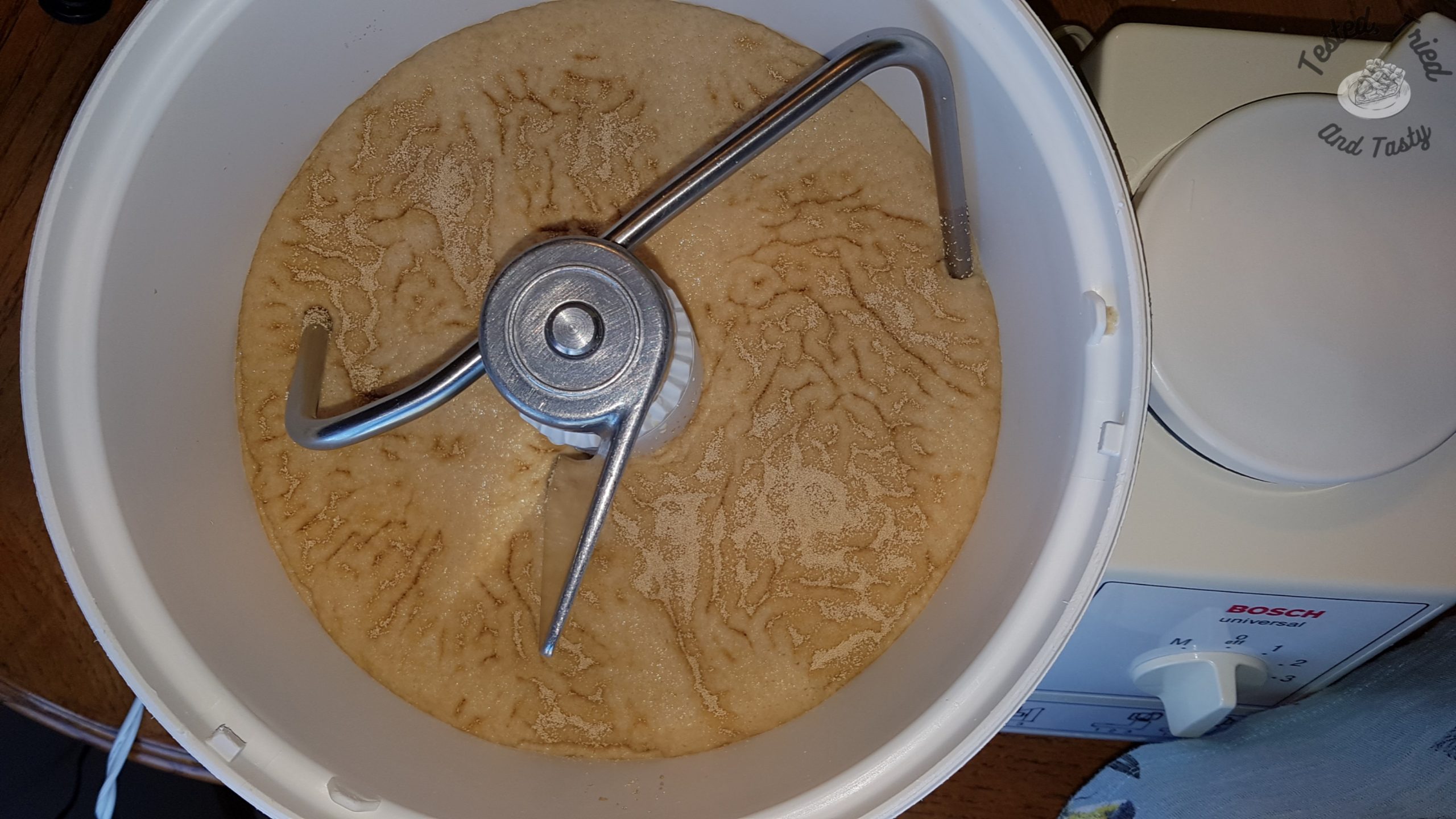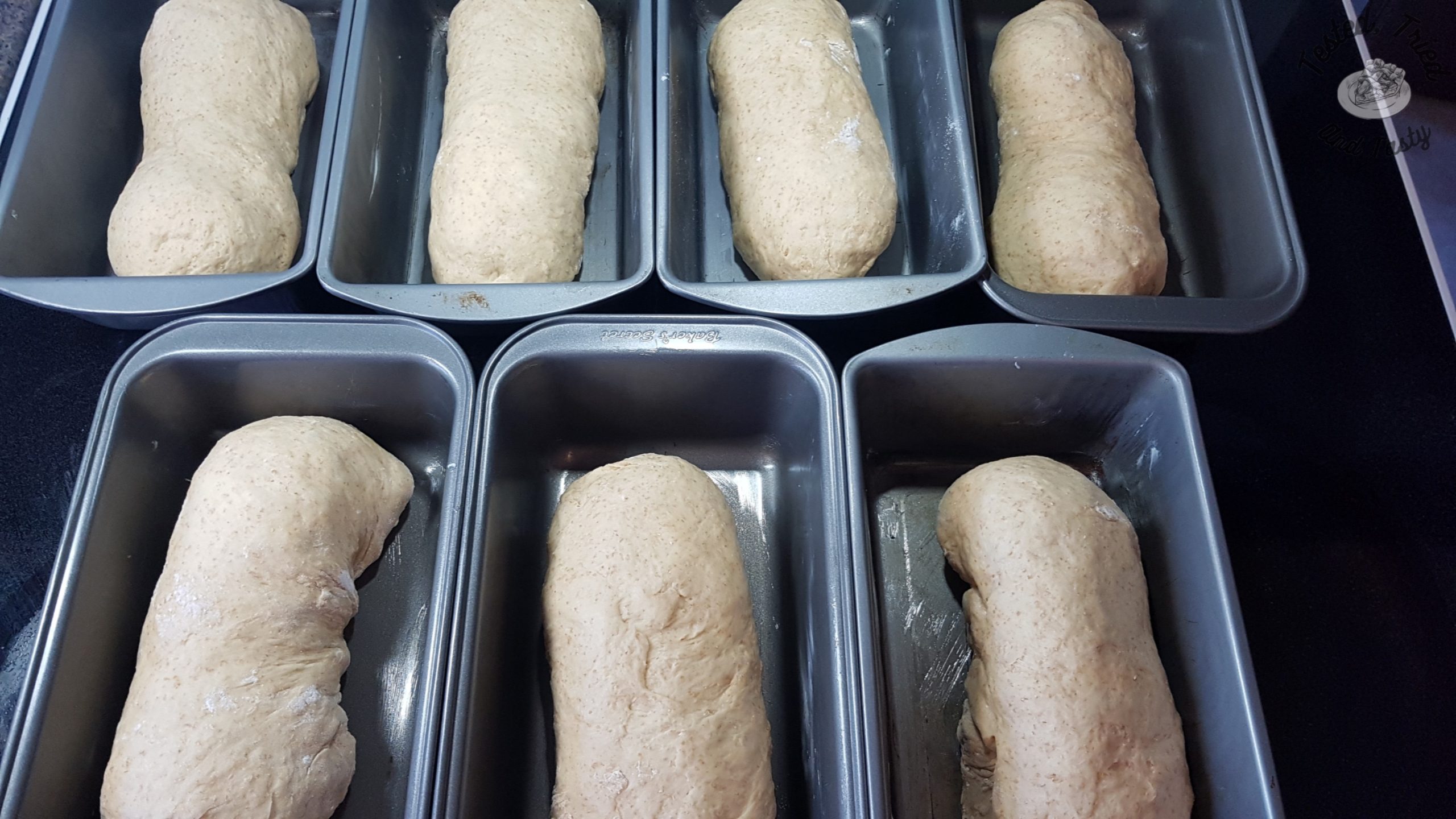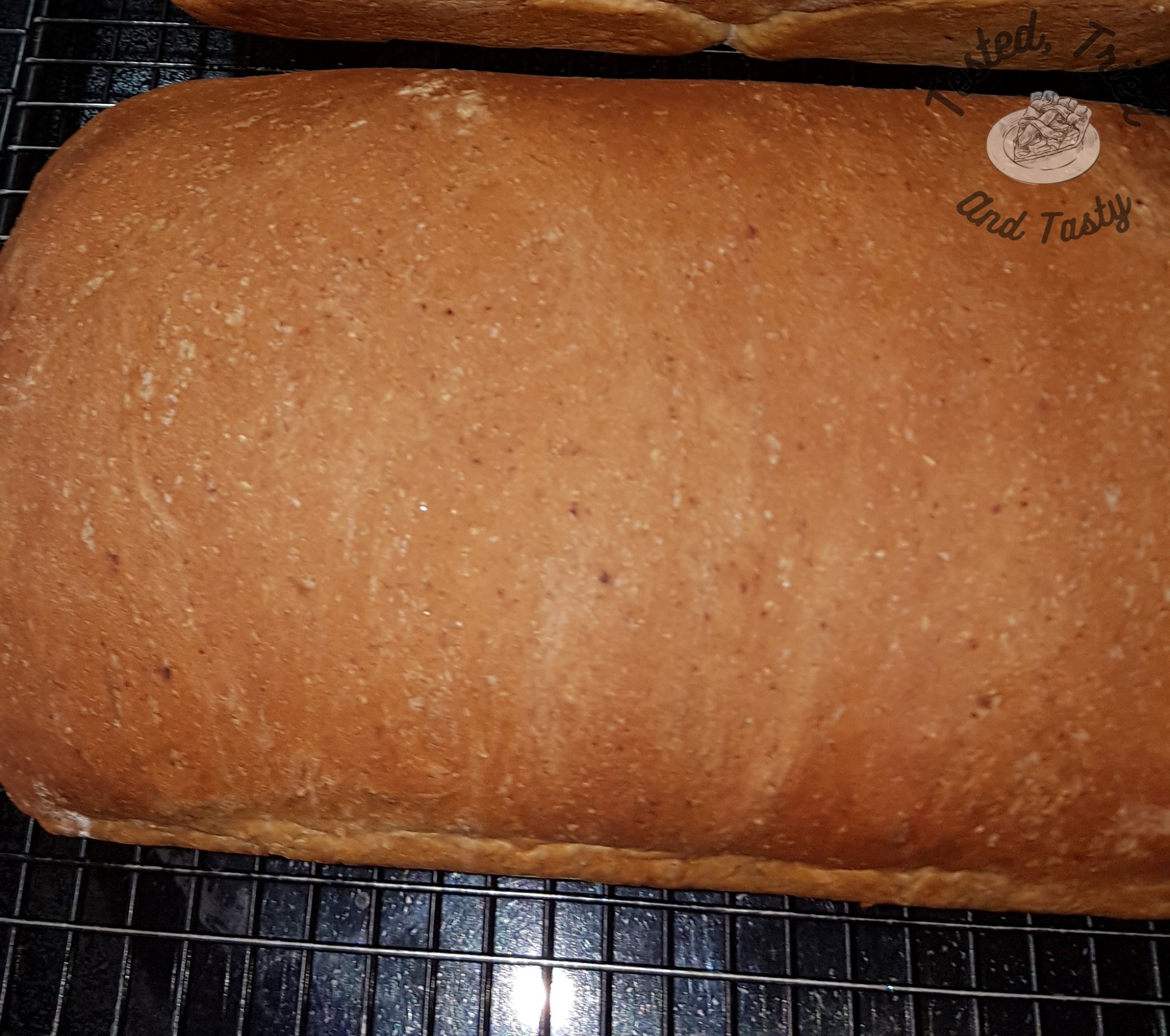This post may contain affiliate links, please read myprivacy policy.
As an Amazon Associate, I earn from qualifying purchases.
Almost Whole Wheat Bread is a delicious side for every kind of soup, stew, and chili. It can also be made into toast, french toast, bread pudding, croutons, etc. Or, bread is used for the classic sandwiches. Bread is such a fun food to learn to make. You can swap so many of the ingredients to try new flavor combinations. Likewise, homemade bread costs a fraction of the amount that store-bought does and tastes 100% better!!

The smell of bread cooking has got to be one of the most comforting smells in the world. Okay, maybe just to those of us who grew up with that smell. When I was little, coming home from school and smelling bread baking just made me know that someone loved me! I just could not wait to eat a still warm end piece with butter. My mom would also grind the wheat with her Bosch mill. The wheat was proudly grown on her parents farm in Saskatchewan. So, this bread was the real deal.
Inspiration to learn to bake bread!
I didn’t attempt baking bread for the first 15 years of married life. My husband’s aunt has always served us homemade bread when we stay at her place. No bread tastes quite as scrumptious as toasted homemade bread with butter and jam. So, this lovely lady inspired me to start baking bread! I used her recipe at first but never had the exact ingredients so have modified it a few times. This recipe for Almost Whole Wheat Bread is now the one I always use.

Baking bread really doesn’t take very long. I used to knead the dough by hand (which is quite a workout with a large recipe). Then, my husband bought me a Bosch mixer. This has made the whole kneading process so easy. I always make a large batch of 7 loaves at a time. This recipe willl make 3 loaves but you cn double it to make 6. When I bake bread, most of the loaves go into the freezer as soon as they have cooled. I also weigh the dough before forming the loaves to get evenly sized loaves.
History of Bread
Bread has been around ever since wheat and barley were first grown. It has appeared throughout history in every area of the Earth where people grew their own plants. Bread has been a staple food since the beginning of human history. Wheat and barley were first grown in Egypt near the Nile River. The early method of leavening was a type of sourdough made by using a piece of bread saved from the last time bread was baked.
At the start of the 20th Century, bread making became industrialized. A machine that sliced and wrapped bread was developed in 1928. It was discovered that removing the bran and wheat germ from the flour would prolong it’s shelf life. Then, in 1941, the US government mandated that some nutrients which were lost in the milling process must be added back in. For many years, white bread was eaten by the rich, while the poor were unknowingly eating the healthy brown bread. Now, this has reversed with the whole-grain being preferred by many.
If you want to read more about the history of Bread in America, this is an interesting article.

Ingredients for Almost Whole Wheat Bread
- Warm Water: Make sure it is only lukewarm, too hot will kill the yeast.
- Yeast: I always use Active Dry Yeast.
- Brown Sugar: Can use 1/2 the amount if you prefer.
- Butter: Can use oil or margarine if you prefer. The fat causes the bread to be softer.
- Molasses: I add this for coloring, to make the bread a darker brown.
- Salt: Add with the first flour, not right on top of the yeast. Salt keeps the yeast from rising too fast.
- Whole Wheat Flour: I use about 70% Whole Wheat.
- Unbleached White Flour:

Method of Making Almost Whole Wheat Bread
- In a large bowl or mixer, add the warm water
- Stir in the brown sugar.
- Sprinkle the yeast over the top.
- Let proof for 10 minutes. It should be bubbly.
- Add the butter and molasses. Stir well.
- Keep gradually adding flour, 1 cup at a time, stirring, until the dough is not too sticky.
- Knead either 10-12 minutes by hand or 8 minutes with a mixer. Add flour if it is still sticky, until the dough feels elastic but doesn’t stick to your hands.
- Pour the dough onto a lightly floured counter.
- Cover and let rise 45 minutes, until doubled in size.
- Punch dough down and let rise another 45 minutes, until doubled in size.
- Grease pans.
- Preheat oven to 300°F
- Shape the dough into loaves. Place in greased pans.
- Let the dough rise for 45 minutes-1 hour, until doubled in size.
- Bake in 300°F oven (convection setting) for 1 hour.
- When finished baking, remove the bread from the pans immediately onto wire cooling racks.

Almost Whole Wheat Bread
Almost Whole Wheat Bread is a delicious side for every kind of soup, stew, and chili. It can also be made into toast, french toast, bread pudding, croutons, etc. Or, bread is used for the classic sandwiches.
Ingredients
Instructions
How to Make Almost Whole Wheat Bread
In a large bowl or mixer, add the warm water.
Stir in the brown sugar, then sprinkle the yeast on top.
Let sit for 10 minutes.
Add the salt and 2 cups of Whole Wheat flour.
Stir
Keep adding flour, 1 cup at a time and stirring until the dough is not sticky.
Knead for around 8 minutes with a mixer, or 10-12 minutes by hand.
Add flour if it is still sticking to your hands. Or wet your hands so that the dough doesn't stick.
Knead until the dough feels elastic but doesn't stick to your hands.
Pour the dough onto a lightly floured counter and cover.
Let the dough rise for 45 minutes or until doubled in size.
Punch the dough down and cover again.
Let the dough rise for another 45 minutes or until doubled in size.
Grease 7 pans.
Preheat oven to 300°F (convection)
Shape the dough into loaves and place in the pans.
Let the loaves rise for 45 minutes-1 hour until doubled in size.
Bake in 300°F oven (convection setting) for 1 hour.
Remove the bread from the pans and put on wire cooling racks immediately.
Enjoy!
Nutrition Facts
Servings 21
- Amount Per Serving
- Calories 188kcal
- % Daily Value *
- Total Fat 2.9g5%
- Saturated Fat 1.3g7%
- Trans Fat 0.08g
- Cholesterol 5mg2%
- Sodium 255mg11%
- Potassium 133mg4%
- Total Carbohydrate 36g12%
- Dietary Fiber 3.4g14%
- Sugars 2.8g
- Protein 5.8g12%
- Iron 11 mg
- Thiamin 36 mg
- Riboflavin 17 mg
- Niacin 20 mg
- Vitamin B6 10 mg
- Folate 23 mcg
- Phosphorus 17 mg
- Magnesium 13 mg
- Zinc 11 mg
- Selenium 41 mcg
- Copper 16 mg
- Manganese 64 mg
* Percent Daily Values are based on a 2,000 calorie diet. Your daily value may be higher or lower depending on your calorie needs.
Note
Salt will slow down the action of the yeast, so add with the flour, not directly into the yeast mixture.
Make sure the water is lukewarm, not hot, to dissolve the yeast.
Sometimes baking bread takes practise. If at first you don't succeed, try, try again!







